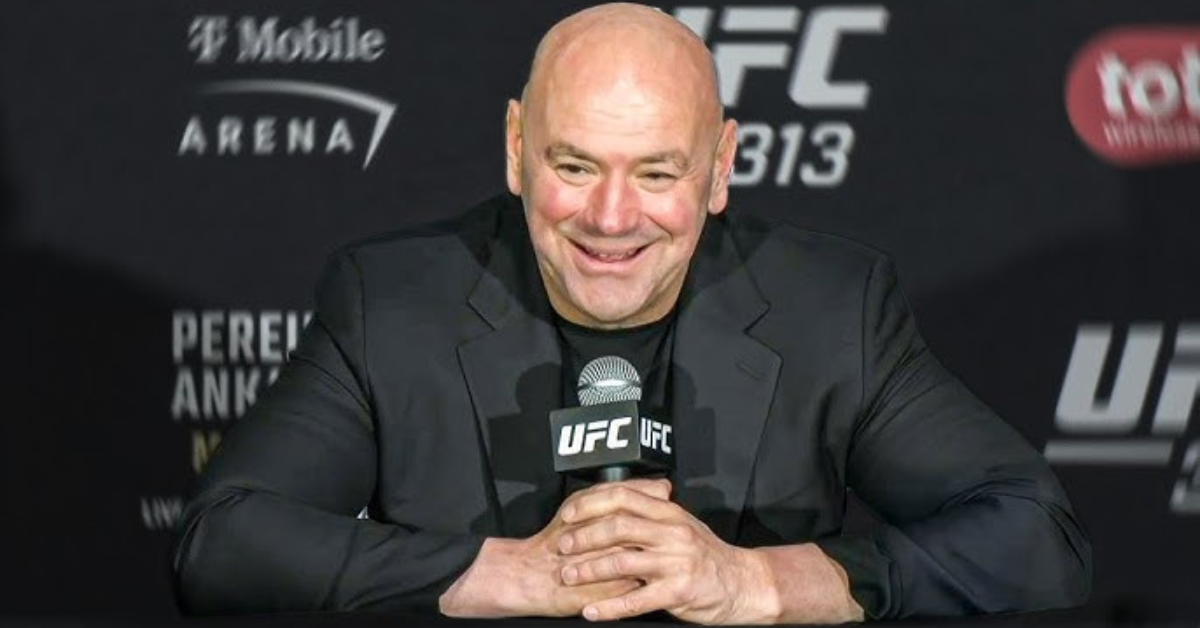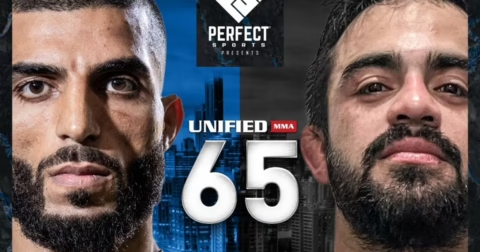Dana White’s unexpected appearance at WrestleMania 41 sparked a wave of controversy and discontent among wrestling fans, revealing the complex dynamics of the newly merged TKO era between UFC and WWE. As the allure of sport and entertainment intertwines, the mixed reactions to White’s presence raise important questions about audience loyalty, brand identity, and the future of professional wrestling. This article explores the implications of White’s involvement in WWE and reflects on the evolving landscape of combat sports entertainment.
Dana White’s WrestleMania 41 Stint: A Disappointment or Just the Beginning?
Dana White’s recent appearance at WrestleMania 41 has stirred significant controversy among fans. With the spotlight firmly on him, the UFC President’s entrance did not go as smoothly as he may have hoped. Despite standing before a packed Allegiant Stadium in Las Vegas, which boasted a crowd of over 61,000 spectators, White was met with loud boos. This reaction came after he was showcased on the big screen twice during the event, immediately drawing jeers from passionate wrestling enthusiasts. It appeared that his presence, rather than bridging the gap between UFC and WWE fans, only widened it.
In the context of the highly emotional environment of WrestleMania 41, the displeasure directed at Dana White reflects a larger sentiment regarding the crossover between WWE and UFC. While the merger into TKO in 2023 aimed to create synergies in marketing and operations, the integration of personalities and fan bases has not been seamless. Fans of WWE may feel that the authenticity and spirit of their favorite sport are being overshadowed by the UFC’s business-driven model. As Dana White faces backlash, questions arise about the future of UFC and WWE collaborations and how they will resonate with devoted fans.
The Impact of UFC-WWE Crossover Events
The integration of UFC and WWE under the TKO brand has sparked conversations regarding potential collaborations in the realm of sports entertainment. As Dana White noted, there have been synergies in terms of production and sponsorships since the companies merged. This raises the prospect of more joint events or appearances, akin to what we witnessed during WrestleMania 41 with White’s presence. However, the reception from WWE fans indicates that any crossover must be handled delicately, ensuring that each brand’s identity is preserved while exploring innovative cooperative avenues.
On the other side, there remains a strong interest among fans to see how both sports can complement each other. Some wrestling fans appreciate UFC fighters like Alexander Volkanovski’s title defense, as evidenced by WWE star Rhea Ripley’s attendance at UFC 314 right before WrestleMania. This interplay exemplifies the potential for shared audiences and narratives, enhancing viewer engagement for both platforms. Yet, it’s crucial that TKO management aligns the expectations of the wrestling fan base with UFC’s unique offerings, otherwise, they risk alienating loyal supporters.
Dana White’s Fan Reception: A Mixed Bag
Despite Dana White’s prominent role in the UFC, his foray into WWE has proven to be met with skepticism. The stark contrast in fan reactions at WrestleMania 41 exemplifies the mixed bag of acceptance that exists. It’s evident that many wrestling fans do not view White as a natural fit within their entertainment sphere, signaling that the clash between UFC President and wrestling personalities could pose challenges for future crossovers. His involvement has revealed deep-seated biases in fan bases, which may complicate collaborative efforts moving forward.
Moreover, fan reactions can significantly impact how future events are planned and marketed. The overwhelmingly negative response White received suggests that WWE must tread cautiously when considering high-profile figures from UFC for any significant appearances. Although the effort to nurture a partnership via TKO is important, it may be beneficial to first establish a greater understanding of the demographic differences and expectations from fans of both entities. Engaging with fans and incorporating their feedback could lead to more harmonious events that respect the traditions of each unique sport.
The Business Strategy Behind TKO and Fan Reactions
Dana White has emphasized the financial and operational advantages that have arisen since the UFC and WWE merged to form TKO. Increased stock prices and synergies are promising indicators that the business strategy is on a positive trajectory. However, the clash at WrestleMania 41 signals a potential disconnect between corporate goals and the raw emotions of fans. While boardroom decisions may herald success for the companies, the real test lies in how these business maneuvers are received by dedicated supporters.
Additionally, balancing commercial interests with fan engagement is a delicate dance that TKO executives must master. The mixed reception of Dana White offers a case study in aligning marketing efforts with audience expectations. With fans vocalizing their resistance at high-profile events, it underscores that even well-planned strategies must consider the perspectives and passions of core fan bases if they hope to achieve long-term success.
How WWE and UFC Fans Differ in Perspectives
The enthusiastic but divided reception of Dana White at WrestleMania 41 highlights the fundamental differences between WWE and UFC fan cultures. WWE fans often prioritize storytelling, theatricality, and character development, while UFC followers typically focus on athletic prowess and competition. This dichotomy poses challenges for TKO as it navigates the intersection of both audiences. Understanding these distinctions is critical when considering future crossover events or promotions featuring representatives from both brands.
As TKO continues to explore collaborative opportunities, it must also respect and honor the unique aspects that define each fanbase. For example, while Dana White’s business acumen might resonate with UFC fans, wrestling fans may view him as an outsider who disrupts the traditional wrestling experience. Addressing these varying perspectives will be vital for any successful integration between WWE and UFC, fostering appreciation rather than resistance among disparate audiences.
Expectations for Future WrestleMania Events
Looking ahead, the fallout from Dana White’s appearance at WrestleMania 41 may set the tone for future integration of UFC figures into WWE events. The mixed reactions serve as a crucial lesson: any crossover must be approached with caution and creativity to ensure both parties feel represented. WWE’s commitment to storytelling combined with UFC’s competitive spirit can create dynamic events, but only if handled delicately. Fans will likely remain vigilant in their scrutiny, making it essential for TKO to consider fan input moving forward.
Furthermore, as future WrestleMania events are planned, the potential for incorporating UFC’s latest stars into wrestling spectacles could yield new opportunities for exciting matches and narratives. However, such initiatives should focus on building bridges rather than compelling appearances that provoke negative reactions. By creating a mutual respect between the audiences and embracing the strengths of both worlds, TKO can position itself to deliver memorable experiences and, perhaps, unite rival fans over time.
Analyzing the Significance of Dana White at WrestleMania 41
Evaluating the significance of Dana White at WrestleMania 41 goes beyond the immediate fan reactions, as it reflects the broader ambitions of TKO to merge two dominant forces in the world of sports entertainment. White’s presence was likely intended to symbolize the unity between WWE and UFC, showcasing their new partnership. Yet, the subsequent negative fan reaction indicates that symbolic gestures may not be enough to win over traditionalists who fear what such changes could mean for their beloved sport.
This significant moment serves as a reminder of the complexities involved in merging distinct entertainment styles. While Dana White’s background aligns with a competitive, high-stakes atmosphere, WWE thrives on scripted drama and character dynamics. Recognizing the fans’ emotional investment in their choices is essential for any future attempts at cross-pollination, ensuring that each brand’s core Message remains intact.
The Role of Sponsorships in TKO’s Success
In the wake of the TKO merger, sponsorships have emerged as a critical avenue for financial growth, which Dana White has noted as a key advantage of the partnership. By leveraging shared marketing opportunities between WWE and UFC, TKO can draw in a wider array of sponsors who are eager to access both fanbases. This dual approach can not only inflate revenues but also enhance brand visibility and appeal among diverse audiences. However, the challenge lies in aligning these sponsorships with promotional content that resonates with fans.
To fully capitalize on this strategy, TKO’s management must ensure that sponsorships don’t overshadow the authentic entertainment experience that fans expect. As seen with the reactions to Dana White’s involvement, straying too far from what makes each sport unique can prompt dissatisfaction among loyal demographic segments. Therefore, while pursuing lucrative partnerships, it remains vital to foster an authentic connection with fans who are at the heart of both the UFC and WWE brands.
Future Collaborations: What to Expect from TKO
As TKO navigates its position in the sports entertainment landscape, fans can expect to see more collaborative initiatives that incorporate stars from both the UFC and WWE. Building on the mixed reception of Dana White at WrestleMania 41, it’s apparent that collaborations need to be executed thoughtfully to avoid alienating segments of either fan base. The objective should focus on creating events that honor the traditions of both genres while introducing innovative concepts that appeal to broader audiences.
Future collaborations may include joint promotional events, competitions, or special appearances that blend the strengths of each sport. TKO must engage with both fan communities to understand their anticipations and reservations regarding such integrations. By prioritizing fan sentiments while optimizing business strategies, TKO can create an environment where mixed events not only succeed commercially but also receive enthusiastic support from fans across both spheres.
| Key Point | Details |
|---|---|
| Dana White’s Reception | Dana White’s appearance was met with boos from a crowd of 61,467 at WrestleMania 41. |
| Event Highlights | The event featured a major betrayal by Paul Heyman against CM Punk. |
| UFC and WWE Partnership | Both organizations merged to form TKO in 2023, but crossover has been minimal. |
| Fan Sentiment | WWE fans showed clear discontent towards White during the event. |
| White’s Role | Dana White narrated the opening montage but failed to connect with WWE fans. |
| Future of the Partnership | White sees synergy in sponsorships and production despite initial hesitations. |
Summary
Dana White’s involvement in WrestleMania 41 was marked by a negative reception from fans, showcasing the challenges in blending the distinct cultures of UFC and WWE. Despite the strategic partnership formed through TKO, it appears that Dana White’s presence in the wrestling world hasn’t yet garnered the acceptance he might have hoped for. His experience at this iconic event serves as a reminder of the nuances within sports entertainment and the need for each brand to maintain its identity.







